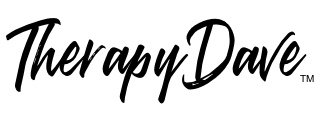The real reason that couples therapy appears ineffective isn’t about the therapy itself. Here’s what typically happens:
A couple in crisis reaches out for help. They start therapy and naturally become more aware of their relationship patterns. After a few sessions, they start feeling confident that things have improved (they haven’t really), begin meeting less frequently, and ultimately stop coming altogether.
The reality? It’s not that therapy is ineffective. It’s that couples often stop coming before the real transformation can take root.
Traditional Therapy Doesn’t Work
Most couples try the traditional week-to-week therapy model, hoping each individual session will bring breakthrough moments. But relationship patterns developed over years can’t be transformed in a handful of scattered sessions. This approach often leads to:
- Surface-level changes that don’t last
- Inconsistent progress
- Starting and stopping therapy multiple times
- Frustration and hopelessness about the process
Why Real Change Takes Time
Think about successful progress in any area of life: Weight loss programs, business coaching, self-improvement or addiction recovery. The common thread isn’t which specific program you choose – it’s the structure and commitment to the process that creates lasting change. The same applies to relationship transformation.
Lasting relationship change requires:
- Moving beyond initial insights into deep pattern change
- Building new communication skills through consistent practice
- Creating new relationship habits that stick
- Processing through challenges rather than avoiding them
- Developing a robust toolkit for future challenges
A Better Approach
Structured Relationship Program Research shows that couples achieve better results when they commit to a structured program rather than open-ended therapy. Consider what a comprehensive program provides:
- Clear milestones so you can see your progress
- Regular support through challenging transitions
- Building blocks that create lasting change
- Accountability for practicing new skills
- Time to integrate changes into daily life
- A roadmap for continued growth
Making the Investment
Yes, committing to a structured program feels like a big step. It requires more upfront investment of time, energy, and resources than traditional session-by-session therapy. However, when you consider the emotional and financial costs of divorce, or the price of spending years feeling disconnected and unhappy, the investment in your relationship’s future becomes clearer.
Think of it this way: Whether you’ve been together for years or decades, dedicating focused time to transform your relationship could be one of the most important investments you’ll make together. Many couples find that a structured program actually costs less in the long run than years of starting and stopping traditional therapy without lasting results.
What Real Progress Looks Like
Couples who commit to structured programs often report:
- Deeper understanding of each other’s needs
- New ways of handling conflict that actually work
- Renewed sense of connection and intimacy
- Confidence in handling future challenges together
- Practical tools they use every day
The first step toward lasting change is recognizing that quick fixes won’t address patterns built over years. The second is being ready to commit to a process that creates real, sustainable transformation in your relationship.
Is Your Relationship Struggling?
Take the pulse of your relationship’s health, right here, right now.
How to Prepare for Couples Therapy
If you’re serious about fixing your relationship, you’ve got to come prepared. That means understanding what’s really going on in your relationship, and understanding the language to use in order to describe what is, and isn’t, working. To help you with this, I recommend identify the following:
- FOCUS: It’s easy to point out the flaws in our partner. Reset your lens to prevent driving your relationship off a cliff, and take a honest look at BOTH of your behaviors. Then…
- STOP: What behaviors are either of you doing right now that are flat-out destroying your relationship? These are the things need to be cut out, pronto!
- START: What are either of you not doing that’s leaving a big, gaping hole in your relationship? It’s time to step up and fill that void! Be specific – otherwise, it won’t make a dent.
- KEEP: What are you doing right? Don’t throw the baby out with the bathwater – ask each other what you’re doing right, let your partner know how much this means to you, and keep at it!
I also recommend that all new clients should read what I consider to be be one of the best articles about the Gottman Method that I’ve seen. It breaks down why Gottman Method Couples Therapy really works and why it’s essential for repairing relationships.
My Only Cautions About the Gottman Method
First off, it’s important to remember that the Gottman Method is also a brand. Yes, it’s widely respected, and for good reason. But what happens if new research comes along and shifts the narrative? Do we just slap a “Gottman 2.0” label on it? It’s not about doubting the method – it’s about keeping an open mind and making sure to always ask questions.
Secondly, a lot of the Gottman Method is based on correlational research, not cause-and-effect. This means that while certain behaviors are common in happy couples, it doesn’t necessarily mean doing those things will automatically make you happy. This isn’t a knock against the Gottman Method – it’s just something to keep in mind with any approach you use.
The best approach is to keep these aspects in mind while using a proven tool that consistently works. While there’s no one-size-fits-all solution when it comes to relationship repair, using a focused approach backed by over 50 years of research can make a significant difference.
Taking the Next Step
I’ve spent my career helping couples face the tough stuff and come out stronger. If you’re serious about making lasting changes, it’s time to take action. The key to transforming your relationship lies in your commitment to growth and understanding. It’s not just about talking things through – it’s about doing the work, day in and day out, to build a better connection with your partner.


